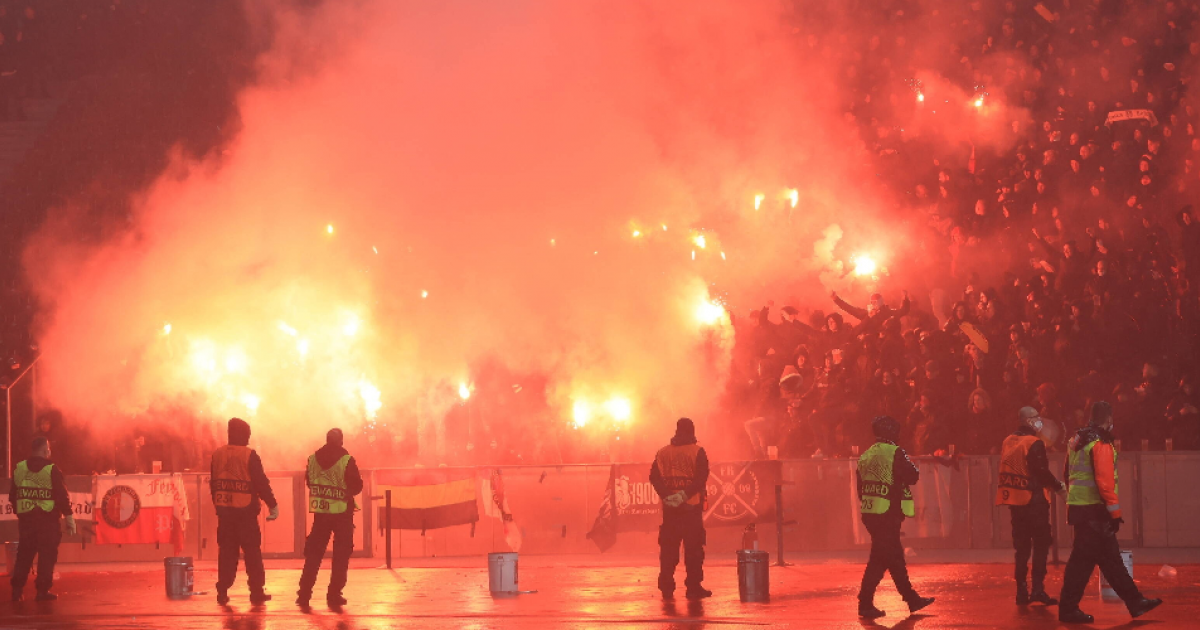Rivalry on the Pitch, Strife in the Stands, Fan Clashes in Dutch Football
Football, a beautiful game that unites nations, also bears witness to intense rivalries that extend beyond the pitch. In the Netherlands, where football is a way of life, the clashes between rival supporters have created a narrative that goes beyond the sporting spectacle. This article delves into the unique dynamics of supporter conflicts in Dutch football, exploring the roots, incidents, and efforts to mitigate tensions within the passionate fanbases.

1. Football Fever in the Lowlands:
a. Football’s Cultural Tapestry:
Football in the Netherlands is deeply ingrained in the cultural tapestry. With clubs boasting rich histories and passionate fanbases, the beautiful game ignites a fervor that transcends the 90 minutes on the pitch.
b. Historical Rivalries:
Rivalries between Dutch football clubs are as old as the game itself. Matches between traditional powerhouses like Ajax, Feyenoord, and PSV Eindhoven are more than contests for points; they are battles for pride and supremacy.
2. The Birth of Fan Clashes:
a. Historical Context:
The roots of supporter conflicts in Dutch football trace back to historical and societal factors. Deep-seated rivalries, regional pride, and social dynamics contribute to the charged atmosphere in stadiums.
b. Hooliganism Emerges:
In the 1970s and 1980s, a wave of hooliganism swept through European football, and the Netherlands was not immune. The emergence of organized groups fueled violent clashes in and around stadiums, leaving an indelible mark on Dutch football culture.
3. Notorious Clashes:
a. Feyenoord vs. Ajax: The De Klassieker Showdown:
The clash between Feyenoord and Ajax, known as De Klassieker, is a fixture that ignites fierce emotions. Matches between these two giants often transcend the boundaries of the pitch, leading to clashes between their passionate supporters.
b. Regional Rivalries: Beyond De Klassieker:
Beyond the famous Amsterdam-Rotterdam rivalry, regional matchups between clubs like FC Utrecht and ADO Den Haag also spark tensions. Local pride and historical animosities contribute to the intensity of these encounters.
4. Efforts to Mitigate Tensions:
a. Stadium Bans and Security Measures:
Football authorities and clubs in the Netherlands have implemented strict measures to curb supporter clashes. Stadium bans, increased security, and surveillance aim to create a safer environment for fans.
b. Collaborative Initiatives: Supporters Working Together:
In a unique approach, fanbases from different clubs have collaborated to mitigate tensions. Joint initiatives, dialogues, and events organized by supporters aim to foster understanding and defuse animosities.
5. Impact on the Beautiful Game:
a. Stadium Atmosphere: Balancing Passion and Safety:
While the passionate support of fans contributes to the vibrant atmosphere in Dutch stadiums, the escalation of conflicts can overshadow the essence of the game. Striking a balance between fervor and safety remains a challenge.
b. Global Perception: Beyond the Dutch Borders:
Fan clashes in Dutch football have implications beyond the national boundaries. Incidents of violence garner international attention, shaping the global perception of the sport in the Netherlands.
6. Societal Reflections:
a. Football Reflecting Society:
The conflicts among football supporters often mirror broader societal issues. From economic disparities to regional identities, the clashes reflect underlying tensions that extend beyond the world of sports.
b. Fan Culture Evolution: From Hooliganism to Passionate Support:
Over the years, there has been a noticeable shift in fan culture. While clashes still occur, many supporters have redirected their passion into creating vibrant atmospheres through choreography, chants, and unwavering support.
7. The Role of Authorities and Clubs:
a. Legal Consequences: Deterrence Measures:
Legal consequences, including arrests and prosecutions, act as deterrence measures against those involved in supporter clashes. Strict penalties aim to discourage hooliganism and violence.
b. Club-led Initiatives: Fostering Responsible Fandom:
Football clubs play a pivotal role in shaping supporter behavior. Initiatives promoting responsible fandom, community engagement, and inclusivity contribute to a positive shift in fan culture.
8. A Glimpse into the Future:
a. Technology and Fan Engagement:
Advancements in technology, from enhanced security systems to fan engagement platforms, hold the potential to reshape the football experience. These innovations may contribute to a safer and more enjoyable environment for supporters.
b. Collective Responsibility: Shaping Tomorrow’s Fan Culture:
The collective responsibility of football authorities, clubs, and fans themselves will play a crucial role in shaping the future of fan culture in Dutch football. Ongoing dialogues, education, and collaborative efforts hold the key to fostering a positive and inclusive atmosphere.
Conclusion: Navigating the Complex Terrain of Fan Rivalries:
Fan Clashes in Dutch Football are embedded in a complex tapestry of history, regional pride, and societal dynamics. While instances of violence have left scars on the beautiful game, the ongoing efforts to mitigate tensions and reshape fan culture offer hope for a more positive future. As Dutch football navigates the intricate terrain of fan rivalries, it is a collective journey involving authorities, clubs, and fans themselves to redefine the narrative and ensure that the passion for the game remains a unifying force rather than a source of division.